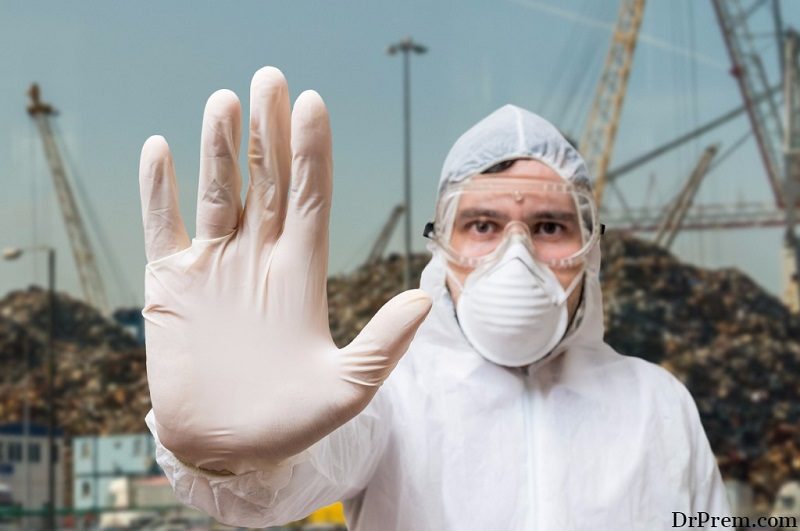There are few industries as dangerous as those involving chemicals. Apart from firms that utilize chemicals in their manufacturing processes, there are of course many facilities that create those chemicals. Workers at all levels within those companies must be very vigilant to safety procedures to avoid deaths and injuries.
But the importance extends even outside the factory setting. The process of remediation in polluted sites requires the extensive use of chemicals to oxidize and otherwise treat soil, groundwater, and other contaminated components.
While every chemical has its own particular safety requirements based on its flammability, oxidative action, and reactivity, there are some general considerations that are always beneficial to workers dealing with hazardous chemicals.
Eye Protection
Workers in even the simplest of industries wear eye protection, so it’s no surprise that those who work around chemicals should be especially careful with their eyes.
But it doesn’t end at simply wearing goggles. Anyone who wears glasses needs to ensure that eye protection doesn’t interfere with their eye correction or vice versa. If the prescription frames are too cumbersome and the user doesn’t have contact lenses, prescription safety glasses will be essential for that worker to do his or her work safely. After all, it is difficult to work safely when you can’t see properly.
Respiratory Protection
This can cover a wide range of possible solutions. Just as many household products recommend use only in well-ventilated areas, many industrial products can be safely managed with no more intervention than open windows or doors, or by using the product outside. Others may require mechanical ventilation, such as attic fans or range hoods.
Chemicals that are airborne as solid particles that are largely inert will require face-mounted respirators, which use a specialized filter to capture these dust-type contaminants.
At the highest level are those that require self-contained breathing apparatus. Furthermore, the backpack-type air cylinders that feed air to an airtight mask keep all chemical fumes away.
Fire Safety
In some situations, the chemicals in use are well-known to be flammable. It is not difficult to convince personnel to use due diligence to reduce the risk of fire.
But some others create a fire hazard without actually burning themselves. Oxygen is a perfect example. Any fire requires oxygen in order to burn, but oxygen doesn’t actually burn. Because the air around us is only about 21% oxygen, it should come as no surprise that high concentrations of oxygen would accelerate combustion, possibly to the point of explosion. It’s for this reason why they don’t smoke at medical facilities and homes with oxygen in use.
Tools can also be a player in fire hazards. Any work that requires contact between metal and other hard surfaces should be done with spark-proof tools rather than run-of-the-mill hardware store products.
As we noted earlier, the safety considerations for specific chemicals go far beyond these general guidelines. Employees conditioned to safety procedures in these situations develop a mindset for safety. It will help them better accept training and education about more complex procedures. And, that might be relevant to the specific chemicals they are working with. Developing that attitude toward safety is essential to developing good habits and fighting complacency.
Article Submitted by Community Writer.




